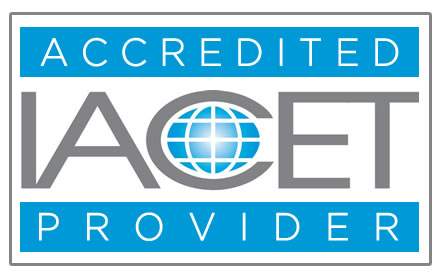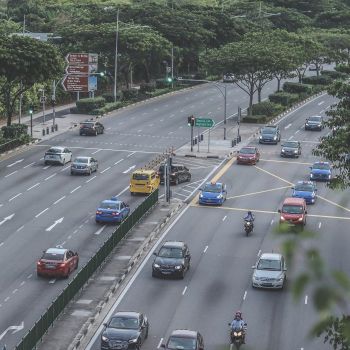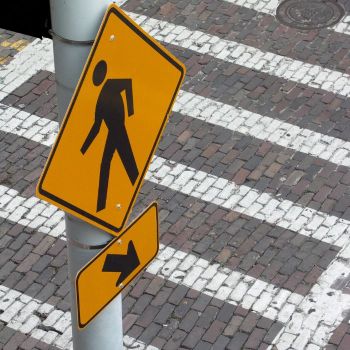4T-Maintenance of Traffic Plans
The Traffic Control Plans course discusses the issue of work zone traffic control safety as it relates to plan design. Both safety and potential delay to the public caused by traffic interruptions during construction need to be addressed.
Description:- Work zone traffic control is an important function affecting the safety or motorists, pedestrians and work zone personnel. Every effort should be made to eliminate or reduce accidents within work zones. In addition to safety, the potential delay to the public – caused by traffic interruptions during construction should be reduced when possible.
The MUTCD states:- “To be effective, a traffic control device should meet five basic requirements:”
- ∙ Fulfill a need
- ∙ Command attention
- ∙ Convey a clear and simple meaning
- ∙ Command respect of road users
- ∙ Give adequate time for proper response
In addition, traffic controls in work zones are to:
- ∙ Warn motorists and pedestrians of hazards
- ∙ Advise motorists of the proper travel path through the areav
- ∙ Delineate areas where traffic should not operate
- ∙ Separate and protect motorists, pedestrians, and the work force
The components of maintenance of traffic plans apply to the mainline roadway, crossroads, side streets, and off –ramps. Regulatory, warning and guide signs can be utilized to inform the motoring public of the work being performed. Channelizing devices such as cones, tubular markers, drums, vertical panels, type I barricades, type II barricades, directional indicator barricades and type III barricades can be used to move traffic around construction areas. Arrow panels and variable message signs can be used to notify the driver of construction activity. The components of traffic control zones consist of advance warning area, transition area, activity area and termination area. Tapers are utilized to shift traffic around work areas. The lengths of these areas are defined in the course. If a lane is to be closed for construction, a lane closure analysis must be completed to determine the times of the day at which the lane can be closed. Pedestrians and bicyclists must be accommodated in the maintenance of traffic plans. Flaggers can be used to stop, release and slow traffic in the construction area. A temporary traffic control (TTC) plan should be developed for use during construction. .
Maintenance of Traffic Outline The Traffic Control Plans course discusses the issue of work zone traffic control safety as it relates to plan design. Both safety and potential delay to the public caused by traffic interruptions during construction need to be addressed.
The fundamental principles of work zone traffic control are:
- ∙ Make traffic safety an integral and high priority element of every project.
- ∙ Avoid inhibiting traffic flow as much as possible.
- ∙ Guide motorists in a clear and positive way.
- ∙ Perform routine inspection of traffic control elements.
- ∙ Give constant attention to roadside safety.
The requirements for traffic control devices and human factor principles for work zones are also discussed. The components of traffic control plans are listed. Definitions of work zone devices are provided along with reference to use of the Qualified Products List (QPL). Work zone device requirements are defined in detail. Traffic control planning is defined as a set of plans describing how traffic will be controlled during each construction phase. The components of traffic control zones, tapers types and lengths, lane closure and detours are included. Transportation management plan development is described as a method for minimizing activity-related traffic delay and accident by the effective application of traditional traffic handling practice and innovative combination of community and motorist collaboration. This course will provide the necessary information to provide an understanding of Maintenance of Traffic Plans. The fundamental principles of work zone traffic control are discussed. The requirements of traffic control devices and human factor principles for work zones are also discussed. The components of maintenance of traffic plans are listed. Work zone device requirements are defined in detail. Traffic control planning is defined as a set of plans describing how traffic will be controlled during each construction phase. The components of traffic control zones, tapers types and lengths, lane closure and detours are included. Transportation management plan development is described as a method for minimizing activity-related traffic delay and accident by the effective application of traditional traffic handling practice and innovative combination of community and motorist collaboration. The course is designed to provide a basic knowledge of traffic control plans from which an engineer can use this information in plan design.
| Learning Objectives | Objectives
|
|---|---|
| Contact Hours | 4 Horas |
| CIAPR courses | CURSO TECHNICO |
| Instructor | Debra Kennaugh, P.E. |
| Devices | Desktop, Tablet, Mobile |
| Language | English |

IACET ACCREDITED PROVIDER
|
Self Learning Solutions LLC is a company with more than 14 years of experience in this market. At Self Learning Solutions we are proud to have obtained the IACET accreditation for our organization, along with the approvals necessary to market our products throughout the United States. Self Learning Solutions is accredited by the International Association for Continuing Education and Training (IACET). Self Learning Solutions complies with the ANSI / IACET standard, which is recognized internationally as a standard of excellence in instructional practices. As a result of this accreditation, Self Learning Solutions is accredited to issue the CEU IACET. |
SLSTECH System Requirements
To run our system effectively you should, as a minimum, use the system components listed on this page. If you do not, the system may still work but some functionality may be lost. Workplace IT environments' internal configurations can also restrict the functionality of our system. Access to content may be affected, as may the possibility of uploading files. File size limitations may also apply. Workplaces may also have older versions of software, and our system may not perform well with these.
Operating system
-
Recommended: Windows 7, 10, Mac OSX Sierra, iPad IOS10
Internet speed
-
Use a broadband connection (256 Kbit/sec or faster—this will ensure that you can view videos and online presentations) through USB wireless modem, ADSL, T1/T2, fibre optic or cable.
-
Dial-up access will be significantly slower, and we do not recommend it for using our system.
Internet browsers
Compatible browsers include:
-
Google Chrome 32 bit version 50 or later (recommended for optimal compatibility, this has been thoroughly tested on Windows)
Safari 10 or later (recommended for optimal compatibility, this has been thoroughly tested on Mac)
Note that add-ons and toolbars can affect any browser's performance.
-
MS Internet Explorer is not recommended
Settings
We recommend that the following be enabled:
-
Cookies
-
Pop-ups (in both Internet browser and security software)
-
Javascript
-
We recommend that you use the latest version of Adobe Flash Player.
Software
-
We recommend that you use the latest version of Adobe Acrobat Reader.
-
To view all the resources uploaded to Hazmat Authority, you will probably need to have Microsoft Office (Word, Excel, PowerPoint) or an equivalent (e.g. Open Office, Viewer) installed.
Security
With all firewalls, ensure that you enable uploading of files.














Validate your login
Sign In
Create New Account